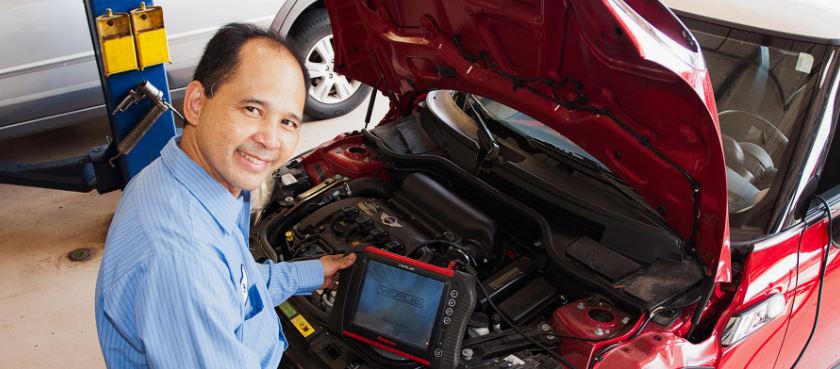The Difference Between a Minor and Major Car Service

Keeping your vehicle in optimal condition isn’t just about reliability—it’s about safety, performance, and long-term savings. Whether you’re a daily commuter or a weekend road-tripper, understanding the distinction between a minor and major car service is key to extending the life of your car and avoiding unexpected breakdowns.
If you’re considering selling your vehicle or upgrading to a newer model, proper service history can also affect resale value. For drivers in Queensland looking to upgrade, professional options like cash for old cars Brisbane often prioritize vehicles with a clear and consistent maintenance record.
What Is a Minor Car Service?
A minor service is like a routine health check for your vehicle. Typically performed every 10,000 to 15,000 kilometers (or every 6-12 months), it focuses on the basic maintenance tasks that keep your car running smoothly.
Common Inclusions in a Minor Service:
- Engine oil and oil filter replacement
- Inspection of lights, brakes, and tires
- Top-up of fluids (coolant, brake fluid, windshield washer)
- Battery and charging system check
- Visual inspection of belts, hoses, and exhaust
Minor services are quicker, less expensive, and designed to catch small issues before they escalate. They’re essential for maintaining engine efficiency and preventing wear and tear from compounding into costly problems.
What Is a Major Car Service?
A major service, on the other hand, is far more comprehensive and is usually recommended every 30,000 to 45,000 kilometers (or every 2-3 years), depending on your car’s make and model.
This type of service digs deeper into the car’s mechanical and electrical systems to ensure long-term reliability.
Common Inclusions in a Major Service:
- All items covered in a minor service
- Replacement of air and fuel filters
- Spark plug replacement (for petrol engines)
- Brake fluid flush and system bleed
- Transmission and differential oil check/replacement
- Coolant flush and radiator inspection
- Suspension and steering system check
- Inspection of wheel bearings and drive belts
Major services take more time and are costlier, but they are essential for preventing major breakdowns, especially in older vehicles.
Minor vs. Major Car Service: What’s the Real Difference?
The main difference lies in depth and timing.
- A minor service keeps your car running efficiently in the short term.
- A major service ensures your vehicle is safe and roadworthy over the long haul.
Minor services are preventive, whereas major services are diagnostic and restorative. Skipping major services can lead to expensive repairs, reduced fuel efficiency, or worse—complete mechanical failure.
Why Regular Car Servicing Matters
Routine servicing doesn’t just protect your car—it protects you and your passengers. Regular maintenance can prevent unexpected breakdowns, improve fuel economy, and boost your vehicle’s resale value.
For those looking to get rid of older or non-performing vehicles, companies offering scrap car removal in Cabooolture typically assess the car’s service history when determining a fair quote. A well-maintained car often means a better return.
Which One Do You Need?
If your car is newer or has recently had a major service, a minor service might be all that’s needed for now. But if your car’s mileage is high, or it’s been years since a thorough inspection, a major service is your best bet.
Signs You May Need a Major Service:
- Engine misfires or strange noises
- Poor fuel efficiency
- Transmission issues or hard shifting
- Uneven braking or squeaking
- Warning lights on your dashboard
The Impact of Minor and Major Services on Vehicle Components
Routine car servicing is more than a checklist—it directly influences the performance, safety, and reliability of every component in your vehicle.
Engine Health
- Minor Service: Regular oil and filter changes reduce friction and wear, keeping the engine cool and clean.
- Major Service: Includes spark plug replacement and fuel system cleaning, helping the engine run smoother and use fuel more efficiently.
Brake System
- Minor Service: Brakes are inspected for wear and fluid levels are topped off.
- Major Service: Brake fluid is flushed and replaced, and the entire system is tested for safety and performance.
Suspension & Steering
- Minor Service: A quick visual inspection is usually performed to spot early signs of wear.
- Major Service: A detailed check helps detect hidden issues like worn ball joints, leaking shocks, or misaligned steering that could affect safety.
Electrical System
- Minor Service: Battery and lights are checked.
- Major Service: Wiring, sensors, alternator, and starter motor may be tested, ensuring all electronics function as intended.
Final Thoughts
Understanding the difference between a minor and major car service empowers you to make better decisions about your vehicle’s care. While a minor service helps keep things ticking, a major service ensures your car stays healthy for the long journey ahead.
Incorporating regular servicing into your schedule not only enhances performance and safety but also increases the longevity and resale value of your car. Whether you’re planning to keep your vehicle for years or thinking of exploring car-selling services, staying on top of your maintenance game is always a smart move.


